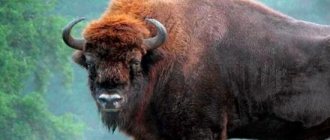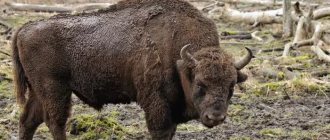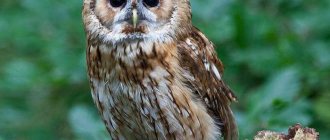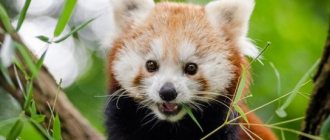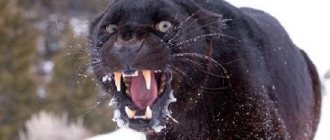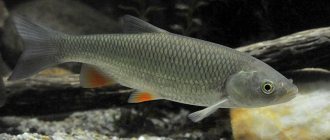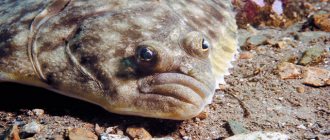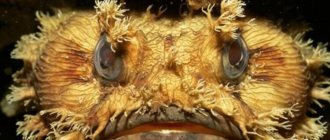Active human economic activity is increasingly becoming the cause of a decrease in the number of many animals, including fish. Uncontrolled commercial fishing, pollution of water bodies with harmful industrial waste and agricultural fertilizers, and the construction of hydraulic structures that limit free movement along rivers lead to a decrease in the rate of population recovery and the gradual disappearance of many valuable fish species.
In order to control and protect endangered animals, a list has been created, which includes species that are in danger of extinction. The document was called the Red Book. In addition to the unified international cadastre, lists of national significance have been developed. In Russia, adding a species to the Red Book automatically entails its protection at the legislative level. The list of fish listed in the Red Book includes more than 40 names.
Inventory of rare and endangered fish
The underwater world is so large and diverse, but some of its inhabitants need help and protection. For this purpose, in 1948 the International Red Book was compiled and in 1968 it was published in small quantities.
And in 1978, they compiled the Red Book of Russia, which included rare and endangered species of animals, birds, fish, reptiles, insects and plants. It says what they are called, where they live, why they disappear and how to help them.
All living organisms included in it are divided into five categories. The first is those species that are in critical condition. On the verge of extinction, or perhaps already completely disappeared.
The second category includes species whose numbers are rapidly decreasing. And if you don’t take any measures to save them, then soon they will be considered endangered.
The third category includes those living organisms whose numbers are not large. They are very rare and require special control and attention.
Species in the fourth category include incompletely studied individuals. There is very little information about them, perhaps they are in danger of extinction, but there is no factual evidence of this.
Those individuals whose numbers have been restored, with the help of people. But, nevertheless, they need special care and supervision - they belong to the fifth category.
Around the world there are more than seven hundred species of endangered fish listed in the Red Book , and in Russia there are about fifty of them. Let's take a look at the most valuable, rare and attention-grabbing fish.
Rare fish of Russia from the Red Book
Let's take a closer look at the endangered fish species that live in our country.
Eisenam trout
Eisenam trout
The species is endemic, the range of which is limited to one reservoir - the mountain lake Eisenam, located in the North Caucasus. Eisenam trout is a residential species whose entire life cycle takes place in one body of water.
Until the middle of the last century, the population size was stable, but after the introduction of the chub in the 70s, the rate of renewal of the taxon slowed sharply. Recently, unauthorized fishing has led to a decrease in the number of trout.
TROUT
Abrau sprat
Abrau sprat
A freshwater species of sprat that is endemic. The taxon's habitat is limited to Lake Abrau, located in the Krasnodar Territory. Until the middle of the last century, sprat was one of the most numerous inhabitants of the reservoir, but after the artificial introduction of several species of predatory fish into the lake, its numbers began to decline sharply. An additional factor provoking a decrease in the population was a stable decrease in the water level in Abrau.
Nelma
Nelma
A species of the salmon family, which is sometimes considered a subspecies of the whitefish. Habitat: northern part of Russia. Nelma is a semi-anadromous fish that migrates from the White Sea and the Arctic Ocean to rivers. You can meet it in some lakes and reservoirs.
The number of nelma began to decline due to active fishing and the construction of dams and dams, which affected the water level in spawning rivers.
Sturgeon
Atlantic sturgeon
Sturgeon is one of the most valuable species of fish. The Red Book contains several varieties of sturgeon. Populations of Amur, Sakhalin and Siberian sturgeon include up to 2-2.5 thousand individuals and are under threat of extinction. But the Atlantic sturgeon is the rarest fish in Russia. Single representatives of the taxon occasionally enter water bodies included in the Baltic Sea basin, including Lake Ladoga.
The main factor that caused the critical decline in sturgeon numbers is intensive fishing. Even after the ban on sturgeon fishing was introduced, many sturgeon became targets for poaching. The decline in the rate of fish population renewal was due to pollution and the construction of hydraulic facilities on spawning rivers.
Siberian taimen
Siberian taimen
Freshwater fish, listed in the Red Book, inhabiting rivers and lakes of Siberia. In the Pechora and Kama basins the species is almost extinct. The main limiting factors include poaching, difficult passage along the riverbed to spawning grounds, and pollution of water bodies.
Sakhalin taimen
Sakhalin taimen
A small variety of taimen that lives in the Far East. The number of the taxon is declining due to uncontrolled fishing, including poaching. In addition, northern fish reach sexual maturity late and do not spawn annually, which also negatively affects the recovery of the species.
Sterlet
Sterlet
The fish is on the verge of extinction due to high consumer demand and uncontrolled fishing. Unfavorable factors that affected the abundance of the taxon also include shallowing of water bodies and deterioration of the ecological situation.
In the southern regions, sterlet is quite rare. Its larger populations live in Siberia. Limited fishing is allowed here in some water bodies. Attempts have been made to introduce sterlet to Pechora, but there is currently no data confirming successful adaptation.
STERLET
Grayling
Grayling
Until the 19th century, the taxon was widespread in water bodies of the north of the European part of Russia. Active uncontrolled fishing has led to a gradual decline in the population. In some reservoirs, complete extinction of the species was recorded.
Grayling prefers cool, clean water, so pollution of rivers and lakes with untreated sewage has had a certain negative impact on the reduction in its numbers. In water bodies where there are sufficient numbers of grayling, limited fishing is permitted under licenses.
Bersh
Bersh
A small predator that looks like perch and pike perch. It was widespread in the Volga, Terek, Ural and other rivers of the European part of Russia. Massive fishing with nets has led to a sharp reduction in the number of bersh.
Currently, strict restrictions have been introduced on catching the predator in order to restore its numbers.
Amudarya great shovelnose
Amudarya great shovelnose
A small freshwater sturgeon fish. Like many members of the family, the shovelnose is on the verge of extinction. The historical area was the Amu Darya and its tributaries. After the construction of hydraulic structures that blocked free movement along the riverbed, the area where fish lived was significantly reduced.
Pseudopathonos
Endangered species also include such species as the large and small Amu Darya pseudoshovel. The difference between these species is that they have a longer caudal peduncle, which is not completely covered with bony plates.
Kildin cod
Kildin cod
One of the endangered endemic species of the cod family. Kildin cod lives in Lake Mogilnoe located on the Kola Peninsula. The main condition for the normal existence of the species and its regular restoration was the special structure of the reservoir: layers of water with different mineral compositions did not mix. So, if in the uppermost layer the water was practically fresh (salinity no more than 3 ‰), then in the lowest it reached 30 ‰. This allowed both marine and freshwater organisms to develop within the same reservoir. Changes in the microclimate in the lake, as well as active fishing by the local population, have put the species at risk of extinction.
Common barbel
Common barbel
A large representative of the carp family. Natural habitat is deep, fast-flowing rivers. You could meet the barbel in the upper reaches of the Dnieper, large tributaries of the Desna and Nerussa. After the current was regulated, a tendency towards a gradual reduction in numbers appeared. Currently, the taxon has been assigned the status of a vulnerable species.
Small-scaled yellowfin
Small-scaled yellowfin
Fish of the carp family that lived in the Amur basin. Changing climatic conditions and uncontrolled fishing have led to its almost complete destruction.
Black Amur bream
Black Amur bream
Natural habitat - reservoirs belonging to the Amur basin. Fish spawning occurs mainly in China. The main factor that caused the decline in numbers to a critically low level is the intensive fishing of spawning individuals, as well as a decrease in water levels in reservoirs.
Black Cupid
Black Cupid
The species belongs to the carp family and is also known as Chinese roach. Found in large numbers in the Amur and Lake Khanka. In recent years, it has been classified as an endangered species due to intensive poaching both in China and Russia.
Muksun
Muksun
A large fish belonging to the salmon family. Historical range - rivers of the Primorsky Territory, bays of the Arctic Ocean with low salt content in the water. The decline in the population is caused by poaching during the spawning period and the active activity of gas production enterprises based in the habitats of the species.
Currently, there are strict restrictions on the catch of muksun. In recent years, artificial breeding of the species for commercial purposes has become widespread.
Podust
Podust
A schooling freshwater fish of the carp family. Lived in many large rivers of the European part of Russia. At the end of the 19th century, Podust was considered the most numerous inhabitant of the river. Moscow. Based on the results of control catches carried out at the end of the last century, the species was listed in the regional Red Book as very rare.
Lenok
Lenok
A representative of the salmon family, widespread in Siberia and the Far East, is on the verge of extinction. A decrease in the number of fish was recorded at the beginning of the last century and continues to this day. The main reasons for the population decline were human economic activities.
Carp
Carp
Belonging to the carp family, the carp and its subspecies kutum are semi-anadromous fish. Recently, it has practically not been found in traditional spawning areas, so it is not possible to accurately determine the number of taxa.
The main limiting factors include the construction of flow regulating facilities, a decrease in river levels as a result of irrigation of nearby farmland, and intensive fishing.
SALMON
Shemaya
Shemaya
A schooling fish from the carp family that inhabits the waters of the Black and Azov Seas. In the last decade, active efforts have been carried out to restore the species: more than 10 million fingerlings were released into natural habitats. An assessment of the situation with the species' abundance showed positive dynamics.
Outrigger
Outrigger
A medium-sized river fish from the salmon family. The species, previously widespread in Siberia, is endangered in its southern regions. The reduction in range is caused by poaching and changes in climatic conditions.
Sterlet
This species of fish is on the verge of extinction due to polluted waters and high consumer demand for them. This Red Book fish was found on the Volga, Kuban, Don, Dnieper, and Ural banks of rivers and the Black Sea coasts. Currently, it is found very rarely, and in Kuban it does not exist at all.
Sterlet fish grows to weigh up to two kilograms. And she has an amazing feature. If you freeze it for a short amount of time and then throw it into water, it will gradually thaw and come to life.
With the help and participation of volunteers and wildlife defenders, their numbers began to increase. They organize people, clean up rivers. They are trying to get industries and organizations to stop dumping all industrial waste into water.
Common sculpin
This fish is included in the second category of declining species. Its habitat is the European part of Russia and Western Siberia. The sculpin will not live in dirty water, and due to the high pollution of water bodies, its population is declining.
This is a small fish with a wide and flat head. During the daytime, it is inactive, most of the time it hides under stones and snags, which is why it got its name.
Common taimen
It lives in the eastern rivers of the Urals and Siberia, in Lake Baikal and Teletskoye. Also in the European part of Russia. These fish are classified as category 1 endangered species.
Taimen is a freshwater fish of impressive size. After all, it grows one meter long and weighs more than fifty kilograms. Polluted waters and mass poaching have practically destroyed these fish. In the above-mentioned habitats there are only single specimens.
Since 96 of the last century, taimen have been included in the Red Book, and from that time they began to actively work to save their individuals. Many artificial pools for breeding these fish have appeared. We also took under protection natural areas in which fish remained in small quantities.
Bursh
This fish has long reigned in deep-water rivers and some lakes. The banks of the Volga and Ural, Don and Terek, Sulak and Samur were famous for its views. It is less common in the salty waters of the Black Sea and Caspian Sea. Recently, it has been found extremely rarely in Russia, which is why it is listed in the Red Book.
This fish is medium in size and looks similar to pike perch and pike perch. Bursch is a predator by nature, so it feeds only on fish. Fishermen-poachers caught these fish en masse in nets, in very large quantities.
Therefore, its numbers began to decrease at a rapid pace. Moreover, industrial production made a huge contribution. Pouring all your waste into river and lake basins. Today, fishing with nets is strictly prohibited. There is also a fight against enterprises that pollute rivers and seas.
Black Cupid
A very rare fish, it belongs to the carp family. In Russia it can only be found in the waters of the Amur. Now there are so few of these fish that they are in the first category in the Red Book.
Black carps live just over ten years, and their sexually mature period begins only in the sixth year of life. Already adult individuals grow in size from half a meter in length and weigh 3-4 kg. They are classified as predators, so most of their diet consists of small fish and shellfish.
Chemical composition
Taimen meat is healthy and nutritious, contains vitamins (PP, D, A, B vitamins, including vitamin B 12) and minerals.
Calories and nutritional value
The calorie content of the product is 119 kcal.
- Content (per 100 g) of proteins – 19 g, fat – 4.8 g. Taimen is a fish of medium fat content.
- Salmon caviar is considered a fairly nutritious product. The calorie content of red caviar is 263 kcal. Protein – 32 g, fat – 15 g.
Beneficial features
It is believed that wild taimen is healthier than artificially grown ones. This applies to all salmon. Fish meat from clean natural reservoirs is more valuable. In any case, the meat of these fish is relatively easy to digest and can provide benefits to the human body.
Brown trout
Brown trout or also called river trout. Since this fish lives in shallow rivers and streams. Some of its species can also be found in the Baltic Sea.
The number of these fish began to decrease because they were caught uncontrollably. Currently, in the Russian Federation, there are entire protected areas for their breeding.
Sturgeons
Everyone knows how valuable black caviar is considered today. The thing is that sturgeon have been exterminated for centuries. The dawn and all the nobility feasted on it during the times of Tsarist Rus'. As a result, this fish has practically disappeared from domestic reservoirs. Beluga, Kaluga, Ship, Amur and Atlantic, Sakhalin sturgeon - all of them are on the verge of extinction, there are practically none left in nature. Also included in this group are sterlet and Siberian sturgeon.
rybalka2.ru
Interestingly, the fishing of these fish has been prohibited for several decades, but the situation is not improving. This is due to the activities of poachers, who are pushed to catch these specimens by good income. Gourmets and connoisseurs do not understand at all that by buying this fish on the black market, they are making their contribution, accelerating the disappearance of valuable fish from nature and doing everything for their extinction.
Another, no less significant reason leading to a rapid decline in the population of valuable fish is river pollution.
depoozm.ru
sea lamprey
An inhabitant of the Caspian waters, however, it goes into rivers to spawn. Here is an interesting and sad fact from the life of lampreys. During spawning, males build nests and actively guard them while the female lays eggs. And after the end, they both die. The number of these fish is very small, and there are only a few of them on the territory of Russia.
This species of fish is exceptional in its appearance. They are earth-colored and have marbled spots all over their bodies. It is not clear what she looks like, either a snake or an eel. It grows a little more than a meter in length and weighs 2 kg.
The skin of the fish is smooth and not covered with scales at all. It came to us many centuries ago, and has not changed since then. In order to somehow help preserve their species, it is necessary to create artificial pools for their breeding.
Dwarf roller
Most of their species live in the northern part of America. And only in the nineties of the last century, it was first seen in Russian waters. It lives in the Chukotka deep-water lakes.
This fish is small in size and at the age of seven weighs no more than two hundred grams. The number of these fish is unknown. In the Red Book it is included in the third category of special control.
Taimen in cooking
The fish is not bony. It has tender, fairly fatty meat, so it can be cooked without adding oil. Lightly salted taimen meat is used in cooking, and a wide variety of dishes can be prepared from frozen fillets.
What color is the meat
Like many salmon, taimen meat has a reddish tint - not deep red, rather pinkish.
Taste
Taimen meat and caviar are highly valued among fish lovers for their excellent taste.
It tastes like salmon meat.
The caviar of this fish is considered a delicacy. The meat is juicy and tender, with layers of fat. Fish caught in the fall is considered the most delicious and fatty.
Cooking methods
They are prepared in different ways: baked, stewed, boiled, steamed. Taimen is made into aspic and canned.
A great way is to cook over an open fire.
Russian bystryanka
Its habitat is large rivers, such as the Dnieper, Dniester, Southern Bug, Don, Volga. These fish live in schools in places with strong currents, hence the name - bystryanka. They float almost on the surface of the water, feeding on various small insects.
By the age of two years, they reach sexual maturity. At this age, fish reach five centimeters in size, and their weight is just over 6 grams. During spawning, fish do not migrate anywhere. They lay their eggs directly on the stones.
To date, the number of these fish is unknown. The Russian bystryanka was classified as an endangered species back in the thirties of the last century.
Fishing for taimen
- Fishing for taimen is prohibited during the spring spawning period, but during this period the fish does not feed and ignores bait.
- In summer, fishing is effective in places with fairly cold water.
- The winter bite depends on the oxygen content in the water; if there is a lack of it, the fish are lethargic and feed little.
Biting calendar
Taimen feed all year round, with a break for spring spawning, followed by a short period of active feeding. In the summer heat it may be inactive, especially during the day. Before the cold weather, he again falls into a gluttonous state, gaining fat for the winter. Active biting continues until freeze-up.
The coolest times of day are morning, evening, and night hours.
Where to fish
- They fish for taimen in the places where it feeds.
- When you hear his “rumbling” or noise during the period when he is hunting, it is easier to find him.
- It is effective to look for this fish in underwater ridges, under snags near the shore, in holes (mainly where there is a reverse current).
- In the dark, taimen can come quite close to the shore.
- In lakes it likes to hide in deep coastal holes. In rivers it is found in places with strong currents, where there is a sufficient food supply in the form of smaller fish.
Fishing methods and features
- A common way to catch taimen is with a spinning rod, which should be strong enough. Don't forget to adjust the reel's friction brake.
- It is rarely caught using a float rod with live bait; sometimes taimen are fished with fly fishing.
- A struggling taimen weighing 15 kg is a serious contender.
- Taimen are careful, even if they managed to attack a school; if you catch one individual, you can hardly expect to catch another fish.
- You need to hook taimen quickly. After hooking, as a rule, a powerful jerk follows. Failures often occur, as the fish are not inclined to swallow the bait deeply.
Popular tackle and lures
In open water, various spinning baits are used - spoons, wobblers, silicone for jig fishing. Taimen are also caught using bait in the form of artificial rodents.
Fishing with live bait, frog, mouse, pieces of raw meat is effective. You can catch it with a worm and insect larvae, or with a fly.
Lines and hooks must be strong. Braided cord is often used. Leashes are made of steel or titanium, which taimen cannot bite through. It is better to fish with a baitcasting reel, but powerful reels of other types are also suitable.
They fish for this fish and in winter for girders. Winter lures are also used for ice fishing for taimen.
European grayling
These fish prefer to live in clean, cold waters of rivers, lakes and streams. It is named so because most of it lives in European territories. Nowadays, the brook grayling is most adapted to life.
They differ from lake and river fish in that they go to spawn at an earlier age and are smaller in weight and size. Its numbers declined catastrophically in the century before last.
Sakhalin sturgeon
A very rare and almost extinct fish species. In the past, this fish was a long-lived giant. After all, over fifty years of life they grew up to two hundred kilograms. Nowadays, despite all the prohibitions, poachers do not stop their fishing, catching sturgeon en masse. In addition to their valuable meat, sturgeon caviar is priceless.
Nowadays, sturgeon no longer grow to enormous sizes. The maximum weight of an adult fish is no more than sixty kilograms, and they grow 1.5-2 meters in length.
The back and sides of the fish are covered with spines, protecting them from more predatory fish. And on its elongated muzzle there are whiskers, but not a pair, like catfish, but four. With their help, sturgeon probe the bottom surface.
Today, unfortunately, there are no more than 1000 of them. There is only one way to save these fish, and that is to raise them in specialized tanks. But this is only a small beginning. It is necessary to support their natural production and identify protected areas.
Since the sturgeon goes to the rivers to spawn, and subsequently the young grow up there in the first three to four years. It is necessary to clean them as much as possible from debris, logs, products of oil and other industries.
The question of which fish are listed in the Red Book remains open. From year to year, new names and descriptions of fish are added to it. And I want to believe that it will not only be those species that have disappeared forever that will disappear. But also fish, the population of which will be saved thanks to the measures taken to protect them.
Description
| Class: | Ray-finned fish |
| Squad: | Salmonidae |
| Family: | Salmonidae |
| Genus: | Taimen |
| View: | Common taimen |
| Scientific name | Hucho taimen |
Taimen fish - appearance
Common taimen, a freshwater fish. It is larger than all salmon species and is long-lived.
What does taimen look like?
Externally similar to trout, but larger. The taimen's body is massive, thin, with fairly large dark spots, which are also found on the gills and fins. The color generally contributes to camouflage. The back is often grayish-bluish in color, the sides are silvery (during the spawning period the color acquires reddish-copper shades). The fins are pointed. The head is somewhat flattened. The snout is relatively short, the mouth is large. The jaws are strong, with many teeth, which immediately identifies the taimen as a predator.
Taimen Photos
Where is taimen found?
This species of salmon prefers cold-water rivers with rapid currents and lakes with running water. In the summer heat it is more often found in cold mountain rivers; in winter it can go out into calmer lowland rivers. Despite their cold-loving nature, taimen do not enter the Arctic Ocean.
Until the end of the 20th century, one could find the Baikal variety of taimen, but now this happens very rarely, and only on the Angara.
Photo of taimen
Lifestyle
- During the day, taimen fish often stays at depth. The favorite places of large individuals are deep holes with snags near the shore with overhanging trees.
- It can also appear on the surface when it catches insects that have fallen into the water.
- At dawn and at nightfall it goes out to shallower places in search of food.
- It is active in cold water, but becomes lethargic in warm water.
- The young live in groups.
- Mature taimen prefer to stay alone; if they form pairs, it is quite rare.
- Overwinters in quiet, deep holes. Wintering pits for taimen are often located in places where large pike also live.
What does taimen eat?
It feeds all year round, with the exception of the spawning period. It is an active predator that hunts almost anything it can attack in proportion to its jaws. The strong jaws of adult taimen allow it to grab fairly large prey. It is capable of eating not only fish, but also fairly large waterfowl and mammals. Rodents can be found even on the shore. Although the main diet of taimen is still fish.
Juveniles can feed on worms.
Natural enemies
Young taimen can be attacked by other, larger predators, as well as relatives. During the spawning period, while moving to shallow water, these salmon can fall into the clutches of their natural enemy - the bear.
Size and growth rate
- In the first 3 years it grows quickly. The largest specimens can grow up to 2 meters in length.
- The maximum weight of taimen can be more than 100 kg; such giants were found in the last century in the rivers of Siberia, as well as on the Amur.
- A trophy specimen weighing 78 kg and 1.5 meters long was caught in the Yenisei River. Usually you come across taimen weighing up to 10 kg.
The largest taimen
In the 40s of the 20th century, the Yakuts caught taimen weighing 105 kg and measuring 2 m 10 cm in a net. And specimens weighing 80 kg were caught on hooks. According to rumors, the largest fish were 3 m long. Such huge individuals, similar to torpedoes or large sharks, were found in large bodies of water, respectively.
The gigantic size of this fish is reflected in one Mongolian legend: once a taimen fell into an ice trap and could not get out of there. And throughout the long winter, this khan fish fed the local residents, who cut off pieces from it, which allowed people not to die of hunger. Moreover, according to legend, in the spring this giant freed himself from the ice and calmly sailed away about his business, since he was so large that people did not cause him significant harm.
How long does taimen live?
- The fixed age limit for the Yenisei taimen was determined to be 60 years.
- The average lifespan of these fish is 15-20 years.
Among salmon, taimen are considered long-lived.
